The MGA With An Attitude
BMC, Gold Seal Engines - BE-100A

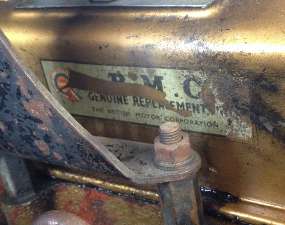
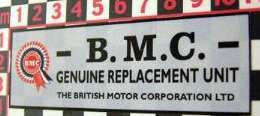 A BMC Gold Seal Engine was a factory Reconditioned replacement engine (painted gold). There were also BMC Silver Seal engines (painted silver). Notice in the picture the sticker on side of the valve cover.
A BMC Gold Seal Engine was a factory Reconditioned replacement engine (painted gold). There were also BMC Silver Seal engines (painted silver). Notice in the picture the sticker on side of the valve cover.
48G is a 'B' series Gold Seal recon unit. The 'A' series was 8G, and the 'C' series 68G. (All pre-1956 reconditioned engines were prefixed 8G). Below are pictures of a very early MGA 8G Gold Seal engine. The repacement number tag is placed low on the left side of the block, difficult location to see with engine in the car. Photos compliments of Barry Measom.
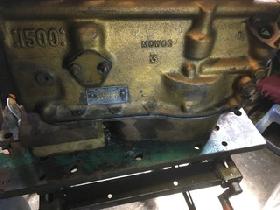
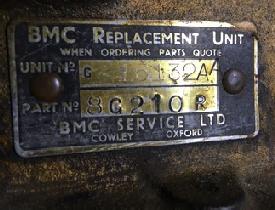
The following is an excerpt from Practical Classics, February 1984, by Chris Graham. It refers to the engines then being supplied by Unipart.
Gold and Silver Seal engines differ in two ways. Gold Seal engines are (were) applicable to vehicles up to five years old and contain a higher percentage of new parts. Silver Seal engines apply to vehicles over five years old and the lower percentage of new parts in these engines reflects the much greater availability of fairly good used parts for these slightly older engines. The sole exception to the 'five year old' rule is the MGB for which Gold Seal units were available rather than Silver Seal.
The same standards of re-manufacture apply to both types of engine except that the Silver Seal specification does not include the water pump, thermostat and thermostat housing and sparking plugs, but does include the oil pump and filter and crankshaft pulley. The Gold Seal specification includes all of these items and both types of engine will have been very thoroughly over-hauled. This work consists of stripping and thoroughly cleaning all internal parts, followed by close examination for wear, hairline cracks etc. Cylinder heads are checked and tested for compression. Crankshafts and camshafts are measured, re-profiled or reground to the same tolerances as a new engine and balanced. The maximum amount of metal which will be removed is 0.020", and any part which cannot be reconditioned within this limit will be discarded and replaced, often by a brand new component. After assembly every engine is set up, balanced, and "run for thirty minutes under power" (according to Unipart) during which time it is subject to inspection and testing for oil pressure, power output, smoothness of running and noise levels.
Referring to the greater availability of used parts for slightly older engines and the lower percentage of new parts used in Silver Seal engines. This is not to say that Silver Seal engines are in any sense a second class product. The same standards apply to both types of engine but in achieving those standards several engines may be stripped to provide parts which are capable of being reconditioned for a Silver Seal engines whereas fewer engines are available from vehicles up to five years old. Unipart aims to offer the same high standard in Silver Seal replacement engines and gearboxes but to do so at a lower cost to the customer. Gold Seal engines come with a 12 month unlimited mileage warranty, with Silver Seal the limits are 12 months or 12,000 miles. Both warranties state that if replacement or repair of the unit becomes necessary due to a manufacturing or material defect the unit will be replaced free of charge and the "unexpected" (unused or not expired) part of the original warranty will then apply.
This one came up on eBay as new/unused, New Old Stock gold seal engine in March 2016.
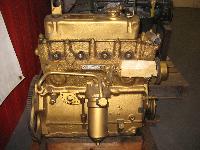
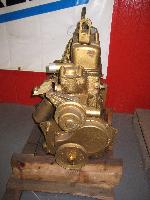
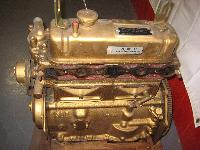
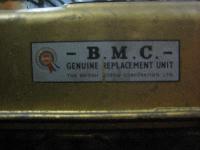

Addendum, January 26, 2017:
Steven Stockham In Salina, Kansas, USA wrote:
"My car has a 1622 Gold Seal factory engine (replacement under warranty) from 1963, and it has an 1800 head (which came that way from the factory). The 1800 head will mate to the 1622 block and this is not as unusual as you might think".
Addendum, January 25, 2022:
On 1/25/2022, Keith Dodd wrote:
"During the 60s when I worked for HA Saunders we received gold seal engines every week and many were oversize pistons, mainly 30 thou which is now not made by piston manufacturers. I had an 8G9 engine in my Austin A35 with FA stamped, F for 30 oversize pistons and A for the std crank. --- We would always look for Mini engines especially Coopers with larger bores and std cranks for competition use. Anything up to H was plus 40 was fitted. From my notes at work see below.
 On Gold seal engines there is a stamped in code (not the raised code) on the engine number plate, both letters tell you, the first letter is the bore size and the second letter is for the crank size. for example my 1957 A35 with 8G9 engine was FA which (F) meant 30 thou oversize block and (A) was standard crankshaft. (M) rarely ever being used". On Gold seal engines there is a stamped in code (not the raised code) on the engine number plate, both letters tell you, the first letter is the bore size and the second letter is for the crank size. for example my 1957 A35 with 8G9 engine was FA which (F) meant 30 thou oversize block and (A) was standard crankshaft. (M) rarely ever being used".
A = STD
B = 10thou
D = 20thou
F = 30thou
H = 40thou
M = 60thou
Regards, Keith Dodd
|